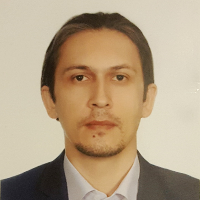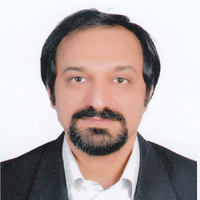Architecture Poetics in Some Selected Religious Contemporary Architecture Works:The Comparative Study of Poetics Capabilities in Poetry and Architecture
Poetry and architecture as two artistic branches use their own language and instrument to convey message. Each of the mentioned arts creates a space by their instruments which is readable by the audience. This property (readability) push them towards textuality. Poetics is a word to show generative aesthetics, space qualitative elements and construction in arts. The infrastructure which happens by passing through textuality properties and promotes speech to poem and also distinguishes between construction and architecture world. Poetic strategies have been identified and classified in poetry by different literary techniques. The current study aims at exploring poetic elements and strategies in architecture space by investigating and comparing poetics in the space of poetry with architecture and answers this questions that what similarities in poetry literary techniques and architecture strategies make the space in poetry and architecture poetic? Therefore, religious contemporary architecture has been used as besides function, expressing concepts is also important in religious architecture which provides a suitable background for poetic expression in architecture. The selected buildingsa have been chosen among religious buildings and from different religions. The samples under investigation are The Water Temple by Tadao Ando, Laleh Park Chapel by Kamran Diba, Sancaklar Mosque by Emre Arolat and Church of San Giovanni Battista by Mario Botta. First, common infrastructures between architecture and poetry have been mentioned. Language has been considered as common factor between these two arts and has been regarded as a basis to compare them. “Poetics” as the axis of this discussion and finally investigations showed that architects like poets have created poetics architecture by literary techniques such as allusion, synesthesia, defamiliarization, metaphor and trope.
-
Amélioration de la compréhension orale en français langue étrangère: Une étude sur l'efficacité des textes médiateurs
Siavash Hashemian, Hamidreza Shairi*, Mahmoud Reza Gashmardi, Roya Letafati
Journal of Research en Langue Francaise, Winter-Spring 2025 -
Interpreting the Relationship Between the Void Design Process and Residents' Social Interactions in Residential Spaces in Tehran
Soudabeh Abbasiazar, SIAMAK PANAHI *, Hossein Kalantarikhalilabad,
Journal of Interdisciplinary Studies in Iranian Architecture, -
The effectiveness of teaching literary texts on the level of argumentative competence and linguistic skills of French language learners in Iranian schools
Sepideh Karimi Heidari, Leila SHOBEIRY *, , Karim HAYATI ASHTIANI
Recherches en Langue et Traduction françaises, Spring-Summer 2025 -
Explaining the main role of behavioral setting in improving the sense of place in academic spaces
Maryam Ghanbarpour, Mohammadmehdi Soroush *, Heydar Jahanbakh,
Journal of Urban Management and Energy Sustainability, Spring 2022




